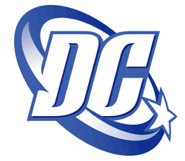
Search
Categories
Famous Authors
Top Selling Books

Book Home ![]() Books Information
Books Information ![]() DC Comics
DC Comics
DC Comics
DC Comics is one of the largest companies in comic book and related media publishing. Today a subsidiary of Time Warner, DC is responsible for such famous characters as Superman, Batman, Wonder Woman, and their teammates in the Justice League. For decades, DC Comics has been one of the two largest American comic book companies (the other being Marvel Comics). For many years, its headquarters were located at 575 Lexington Avenue, and then 666 Fifth Avenue, both in New York City; in the 1990s, they moved to 1700 Broadway. The initials "DC" are an abbreviation for Detective Comics, after one of the company's flagship titles. History Golden Age (1930s and 1940s) When the superhero genre faded in the late 1940s, the company focused more on other genres, such as science fiction, westerns, humour and romance. They largely avoided the crime and horror trends of the time, and thus avoided taking the brunt of the backlash against crime and horror comics in the 1950s. A handful of the most popular superhero titles (most importantly Action Comics and Detective Comics, the two longest-running titles in comics history) continued publication. Silver Age (1950s and 1960s) In the early 1960s, Marvel Comics - previously a relatively minor publisher - was beginning to rise quickly in the market, due largely to the creative contributions of Stan Lee, Jack Kirby, and Steve Ditko. DC was slow to react to Marvel's successful focus on more complex characters and tighter continuity, and the publisher began to develop a reputation in the market for simplistic and "old-fashioned" storytelling. It was mainly with defectors from Marvel like Ditko, or newer talents like Neal Adams that this new approach to storytelling took hold at DC. Late 1960s and early 1970s There were, however, bright lights, like Dennis O'Neil, who worked on Green Lantern and Batman. Nevertheless, the period was plagued by short-lived series that started out strong, but quickly petered out when the creators, not having strong financial reasons to stay, abandoned their creations. In addition, Jack Kirby defected from Marvel to create his most artistically ambitious creation, The Fourth World titles, in which Kirby attempted to create an original sophisticated sub imprint that could appeal to a loyal fan audience. However, conflicts with management who had little faith in the concept led to the venture's premature cancellation, although the characters and concepts would become integral to the DC Multiverse. Late 1970s and 1980s In the early 1980s, the new management of publisher
Jenette Kahn, vice-president Paul Levitz, and managing editor Dick
Giordano decided to address the problem of talent instability in their
series. To that end, they began to offer more concrete financial rewards
to their talents, such as royalties which gave a direct incentive
to foster successful properties and to keep with them. In addition,
the company created the publishing concept of the limited series that
allowed more flexible arrangements for storylines that could be successful
without the pressure of immediately following them up on an indefinite
basis. This successful revitalization of a minor title led the editorship to look at doing the same to their entire line comics. The result was the limited series Crisis on Infinite Earths, which gave the company an opportunity to dismiss some of the "baggage" of its history, and revise major characters such as Superman and Wonder Woman. Yet DC did not abandon their history completely. In 1989, they began publication of the DC Archive Editions, a series created to collect their early, rare issues into a permanent hardback format. Meanwhile, British writer Alan Moore had re-energized the minor horror series Saga of the Swamp Thing, and his highly acclaimed work sparked a comic book equivalent of rock's British Invasion, in which numerous British talents, including Neil Gaiman and Grant Morrison, came to work for the company. The resulting influx of sophisticated horror and dark fantasy material led not only to DC abandoning the Comics Code for particular titles by those talents, but also to the later establishment in 1993 of the Vertigo imprint for mature readers. Acclaimed limited series such as The Dark Knight Returns by Frank Miller and Alan Moore's Watchmen, also drew attention to changes at DC. This new creative freedom and the attendant publicity allowed DC to seriously challenge the dominance of Marvel. 1990s DC's Piranha Press and other imprints in the 1990s were introduced to facilitate diversification and specialized marketing of its product line. They increased the use of nontraditional contractual arrangements, including creator-owned work and licensing material from other companies. They also increased publication of trade paperbacks, including both collections of serial comics and original graphic novels. The Vertigo line was aimed at an older and more literary audience, largely free of the "kid stuff" stigma its main superhero line still held. DC entered into a publishing agreement with Milestone Media, which gave the company a line of comics featuring a more culturally and racially diverse range of superhero characters; although the Milestone line ceased publication, it yielded the popular animated series Static Shock. Paradox Press was established to publish material that would be considered "mainstream" in the book trade - including the large-format Big Book of... series, and crime fiction such as Road to Perdition - but paradoxically remained a niche in the comics industry. DC purchased Wildstorm Comics from Jim Lee and maintained it as a separate imprint with its own style and audience. Likewise they added the Wildstorm imprint America's Best Comics, created by Alan Moore, including the titles Tom Strong and Promethea. 2000s Starting in 2004, DC's main publications began undergoing major changes, starting with the Identity Crisis seven-issue maxi-series. DC also announced a "sequel" to Crisis on Infinite Earths and follow-up to Identity Crisis entitled Infinite Crisis, a seven-issue maxi-series that DC claims will also shake up the DC universe. In 2005, DC started the build-up to Infinite Crisis with the one-shot Countdown to Infinite Crisis. After it was published, DC launched four six-issue mini-series: Day of Vengeance, The OMAC Project, The Rann/Thanagar War, and Villains United; each of the series leading up to Infinite Crisis. After Infinite Crisis is published, all major DC titles will advance one year forward in time. Recently, DC Comics launched an "All-Star" line, featuring some of DC's more famous characters in modernized settings. All-Star Batman & Robin the Boy Wonder was launched in July 2005 as an updated version of the titular characters. All-Star Superman, Superman's relaunching, is slated to begin its run in November 2005 for 12 issues. Not unlike Marvel's Ultimate line, "All-Star" is a complete restart from previously established continuity, with which DC hopes to attract new readers. |
